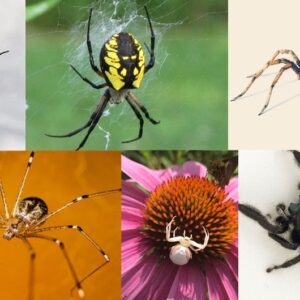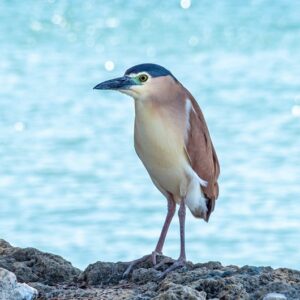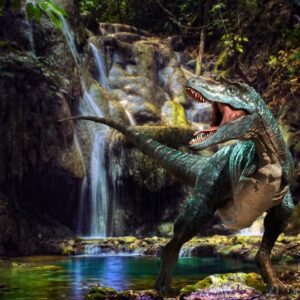
Classifications of birds are based on their genetic, physical, and behavioral traits. Through the biological study of taxonomy, scientists are able to create different classes of birds according to their traits. So, what are the most common classifications of birds? If you’re interested in learning more about birds and their classifications, this article offers you the most common classifications of birds in the world.
4 Most Common Classifications of Birds

Image source: Pinterest
First, it’s important to note that all birds are classified in the following points of classification: Chordata (phylum), Eukaryote (domain), Animalia (kingdom), and Aves (class). But there are several other levels of grouping that vary depending on the type of birds you’re classifying. Let’s take a deeper look at these levels of classification of birds.
1. Class: Aves (Birds)
Class Aves comprises the phylum Chordata of the animal kingdom, which has approximately 9,000 species. This class of animals is built for flight using wings. So, all birds belong to class Aves.
Additionally, this class of birds shows courtship, nest building, territorial tendency, and parental care. Birds in the Aves class are warm-blooded and their forelimbs come in the form of wings. They also have strong flight muscles to enable them to sustain their flight.
Their back (hind) limbs are modified for walking, perching, wading, swimming, hopping, running, and grasping. These limbs have epidermal scales. Their endoskeleton has well-developed bones that are long and hollow.
Commonly referred to as pneumatic bones, these bones are filled with air cavities to facilitate their flight. Class Aves birds have spindle-shaped bodies that minimize wind resistance, enabling them to fly quickly and comfortably. Their feathers are meant to preserve body heat and minimize air friction when flying.
These birds don’t have skin glands, but they have oil glands. Their lower and upper jaws are modified into a beak that enables them to peck in the dirt in search of worms and seeds. These birds have very sharp eyesight that enables them to detect even the tiniest worms and grains in the dirt.
Their alimentary canal features a crop, which softens food, and a gizzard for crushing food. Some of the birds in this class, especially those that feed on seeds like pigeons, don’t have a gall bladder. Aves birds have elastic and soft lungs that facilitate their respiration.
Their vocal organ – syrinx – is located at the base of their trachea. They have a four-chambered heart. Their RBCs are oval in shape, biconvex, and nucleated.
These birds have 12 pairs of cranial nerves, a single ovary, and an oviduct on the left side. Birds in class Aves are oviparous and display sexual dimorphism. Their eggs have four embryonic membranes (amnion, allantosis, yolk sac, and chorion).
Another notable thing about class Aves is that it’s divided into two categories: Archaeornithes and Neornithes. Archaeornithes are extinct. These birds had toothed beaks and a long lizard-like tail. A good example of Archaeornithes is the Archaeopteryx.
Neornithes, on the other hand, include both extant and extinct species of birds. Their beaks aren’t toothed, but they have a short tail. These birds include kingfishers, ducks, grey herons, penguins, etc.
2. Phylum: Chordata (Birds)
Class chordata is subdivided into three subphyla: craniate/vertebrate (birds, fish, amphibians, mammals, and reptiles), tunicate/Urochordata (salps, larvaceans, and sea squirts), and cephalochordate (lancelets). This class includes all vertebrates (animals with a backbone), and a few invertebrates (animals without a backbone).
The three subphyla have a bilaterally symmetrical body. They have a longitudinal – a cartilaginous rod that runs between the nerve cord and the gastric tract. This rod supports the nerve cord. It’s replaced by vertebral support after the embryonic phase in all vertebrates.
The chordata phylum also features a dorsal nerve cord, which comprises a package of nerves and it runs along the “back” of the bird and separates into the brain and spinal cord. This nerve cord is hollow and stays dorsal to the notochord. Another common characteristic of birds in this class is the pharyngeal slit.
This slit comes in the form of an opening that allows water to go through the animal’s mouth without running through its digestive tract. The slits, which are found on the lateral side of the pharynx, connect the mouth and throat. Additionally, birds in the phylum chordata have a post-anal tail, which extends from the body to the anus.
This tail has skeletal muscles that enable the bird to move. But this tail disappears in adult chordates. This class of birds has a bilaterally symmetrical, coelomic, segmented, and triploblastic body. Their body designs are complex and well-differentiated.
3. Domain: Eukaryote (Birds)
Eukaryote comprises a wide range of organisms, including birds, humans, reptiles, and other mammals. This class refers to single-celled or multicellular organisms that have cells with a unique, membrane-bound nucleus. Eukaryotes aren’t just animals; they can also be plants, protists, and fungi.
Any organism whose cells are organized into compartmentalized structures known as organelles like the nucleus. A eukaryotic cell has a nucleus enclosed within the nuclear membrane and forms large and multifaceted organisms. These cells can maintain various environments in one cell that enables them to perform numerous metabolism reactions.
That’s why they’re larger than the prokaryotic cells. Eukaryotic cells have two locomotory organs: flagella and cilia. These cells are divided through a process known as mitosis.
The eukaryotic cells also have a cytoskeletal structure. Their nucleus has one linear DNA, which holds all the genetic data. The structure of eukaryotic cells is made up of several important components, including the plasma membrane, cell wall, cytoskeleton, endoplasmic reticulum, nucleus, Golgi apparatus, ribosomes, mitochondria, plastids, and lysosomes.
4. Kingdom: Animalia (Birds)
Kingdom Animalia comprises all animals – multicellular eukaryotes. Unlike plants, which don’t have chlorophyll or cell walls, members of the Animalia display a heterotrophic type of nutrition. This means that they can’t produce their own food, so they have to rely on other organisms for food.
For example, birds can’t produce their own food. So, they feed on other organisms like plants and worms. This class is further classified into several subphyla depending on the design and differentiation of their body. One of these subphyla is chordate, which comprises birds, mammals, and reptiles.
It’s important to mention that birds are widely considered to be the closest direct descendants of dinosaurs because they share a lot of physical and genetic traits. But even though birds belong to the Animalia kingdom, they’re not mammals. They are avians.
First creatures that looked like modern-day birds first appeared some 60 million years ago. Over time, these creatures underwent numerous evolutionary changes to get to what we now know to be birds.


